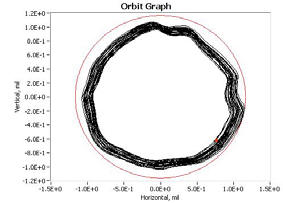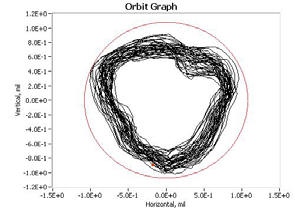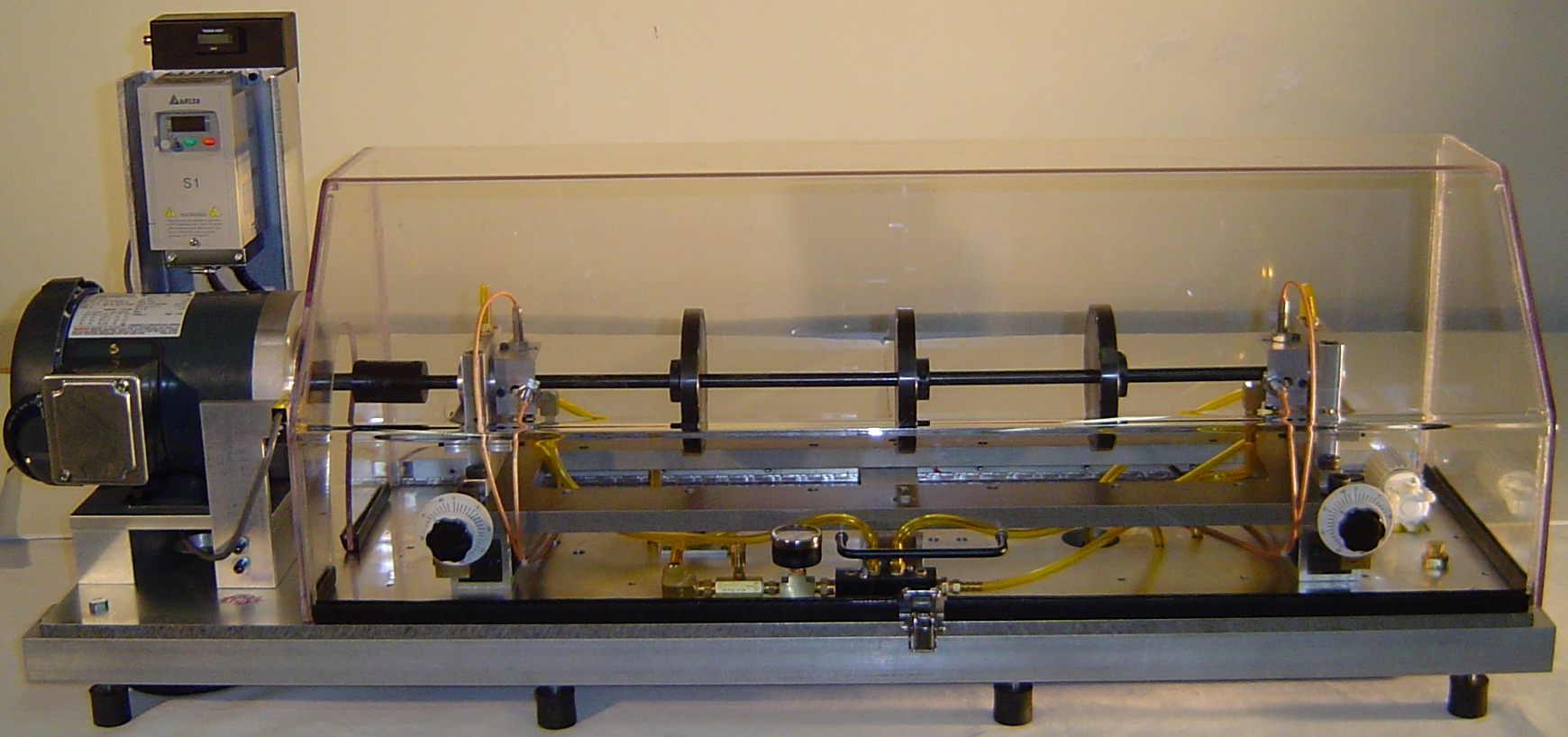Dynamic Behaviors of Rotor with Fluid Film Journal and Rolling Element Bearings
Lin Liu & Suri GaneriwalaSpectraQuest Inc., 8227 Hermitage Road, Richmond, VA 23228
Published: November, 01 2005
Abstract
Using a MFS-Lite ExtendedTM machine, studied the behavior of a rotor shaft supported on fluid film journal bearing as well as rolling element bearing from the perspectives of rotor resonance frequencies and rotor orbit shapes. The experiment results indicate the effect of bearing types on the rotor natural frequencies can not be neglected. Moreover, the rotor orbit displays totally different shape for journal fluid film bearing and rolling element bearing.
Introduction
SpectraQuest has designed a new simulator which is called Machinery Fault Simulator-Lite ExtendedTM.It is an innovative tool specially designed to study the dynamic behavior for rotor supported by oil lubricated journal bearings. A SpectraQuest Lube Oil Pump is provided with MFS-Lite Extended to drive the lubrication fluid. Besides that, it is an invaluable tool for studying signatures of common machinery faults without compromising factory production or profits.
This new simulator is used in this work to investigate the dynamic performance of rotor supported by fluid film journal bearing as well as rolling element bearing. The experiment is concentrated on the rotor system dynamic characteristics under resonance conditions. There are four approaches that you can adopt to excite a rotor natural mode on the Machinery Fault Simulator-Lite ExtendedTM.
1. change the number of disks or loaders on a shaft
2. change the positions of disks on a shaft
3. change the position of bearing house on the rotor deck
During the resonance test, we are trying to obtain a balance between the speed and vibration. If you introduce too much unbalance, or the unbalance is located at the position with the maximum vibration amplitude of a specific mode, the motor controller might be cut-off because the load is too high. However, in order to excite the resonance, you need certain amounts of unbalance. Therefore, you need to have the unbalance large enough to excite the mode but not cut-off the motor. The rule of thumb to achieve some kind of balance on the unbalance is: for low speed resonance, unbalance weight can be used. For high speed resonance, (the third mode) unbalance weight is not needed. The unbalance of the disks by themselves is enough to excite them.
By appropriate configuration of the rotor disks on the shaft, we can excite the first three rotor natural frequencies.
For proximity probes are installed on the two bearing housings of the rotor shaft to collect the displacement data of the shaft. Two proximity probes for each bearing housing, one in the horizontal and one in the vertical directions respectively.
Fig 1: MFS Lite-Extended

Figure 2: Orbit Graphs of Shaft with Fluid Film Journal Bearings

Figure 3. Orbit Graphs of Shaft with Rolling Element Bearings






